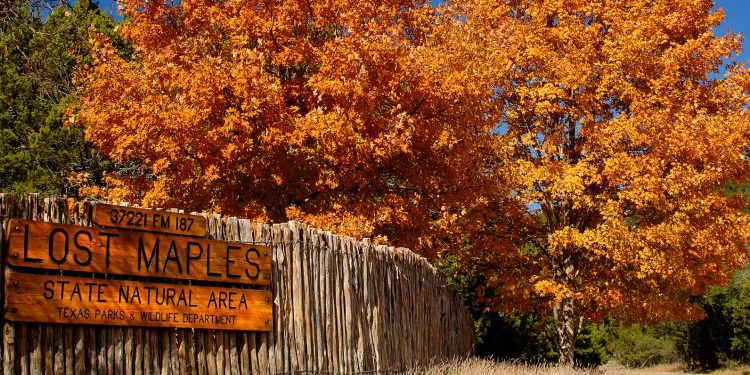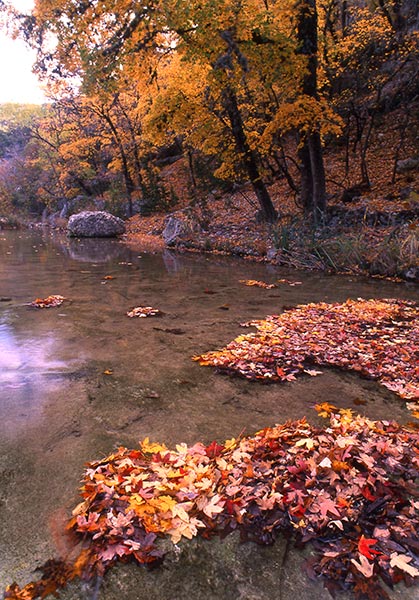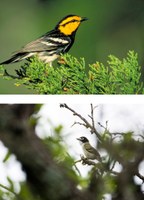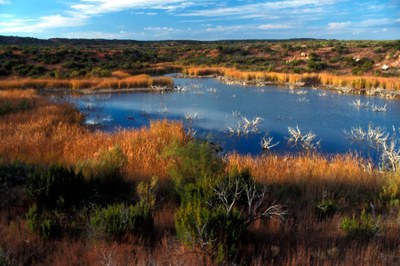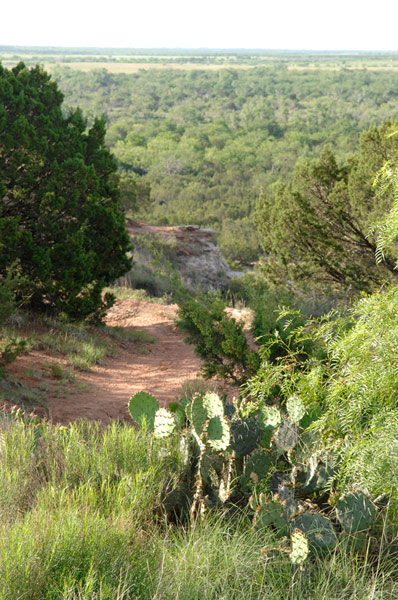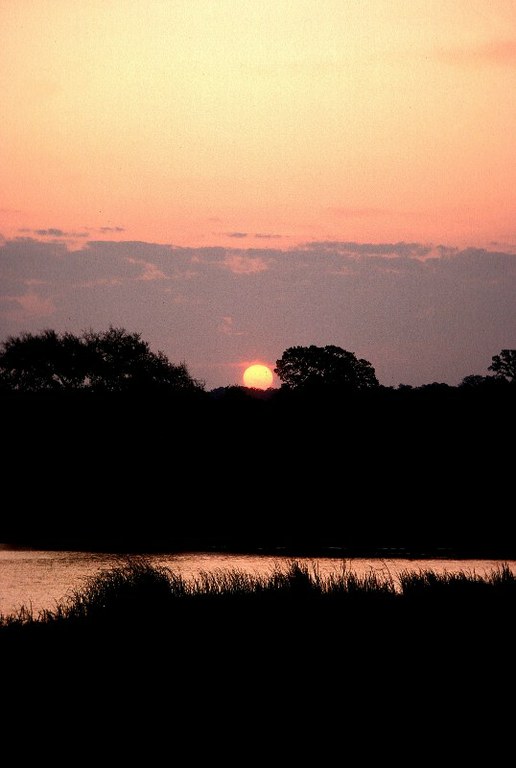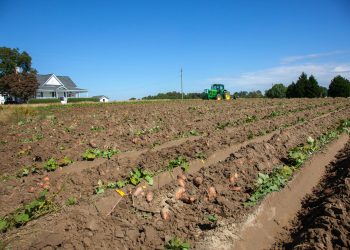Are you already feeling the fall weather with that cold front this week? It’s that time of the year when you can go (quickly) to enjoy the beautiful colors of fall foliage in the Lone Star State.
Yes – you don’t have to travel that far to see the fall colors of yellows, reds, and oranges. The four state parks recommended in this report could offer Texans beautiful autumn sceneries and fresh, cool air for a weekend getaway.
The information and description below were taken from the Texas State Parks website, which is under the state agency Texas Parks and Wildlife Department:
1. Lost Maples State Natural Area
Where:
37221 F.M. 187
Vanderpool, TX 78885
Entrance Fees:
- Adult : $6 Daily
- Child 12 Years and Under: Free
Hours: Open daily,
8:30 a.m. – 4:30 p.m.
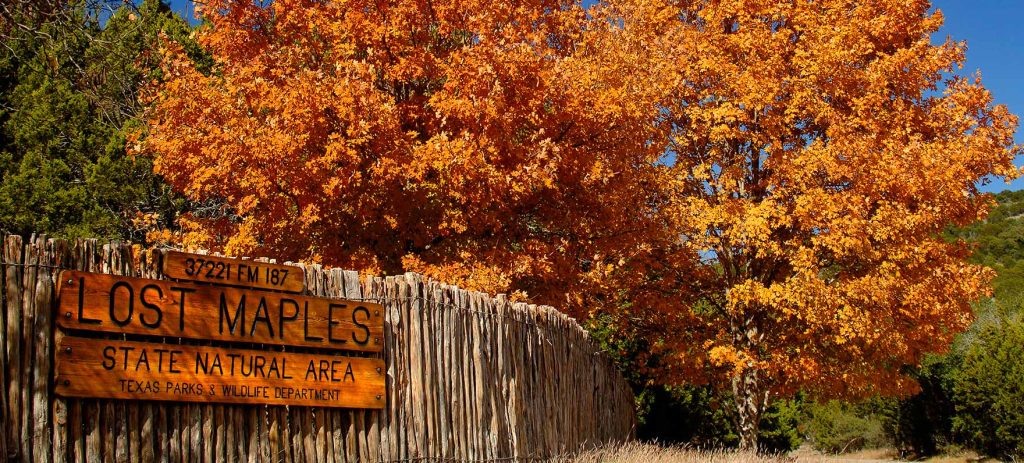 Changing Beauty
Changing Beauty
You may know Lost Maples for its fall color, but it is spectacular year-round. Visit any time to see abundant wildflowers, steep canyon walls and the scenic Sabinal River. We’re just two hours northwest of San Antonio.
Things to Do
Your whole family will find plenty to do here. Take a hike or a photo, go fishing, look for birds and other wildlife, camp, backpack, stargaze and hunt for geocaches.
Lost Maples protects a special stand of Uvalde bigtooth maples. Many folks come here to see colorful leaves on these and other trees in autumn. The show varies, depending on weather conditions. Check our Fall Foliage report (starting mid-October).
Please stay on designated trails. The natural area contains steep and rugged terrain. Do not climb on rocks or hillsides. Bigtooth maples have shallow roots, and you can hurt the trees by walking over their roots.
Note: Cell phone service is not available in the Natural Area.
Nature
The park showcases many Edwards Plateau plants and animals.
Lost Maples holds steep and rugged limestone canyons, springs, plateau grasslands, wooded slopes and clear streams. The fall foliage of our large, isolated stand of uncommon Uvalde bigtooth maples can be spectacular.
The foliage changes color the last two weeks of October through the first two weeks of November, depending on the weather. The park is very popular during the fall and is often crowded.
Note: Schedule trips during the weekdays, if possible, as we only have space for 250 cars.
Look year-round for rare species of birds, such as the green kingfisher. Black-capped vireos and golden-cheeked warblers nest and feed in the park in spring and early summer.
Other wildlife includes gray fox, white-tailed deer, armadillo, raccoon, bobcat, rock squirrel and javelina.
2. Guadalupe River State Park
Where:
3350 Park Road 31
Spring Branch, TX 78070
(A 45-minute drive from San Antonio and 1.5 hours from Austin)
Entrance Fees:
- Adult: $7 Daily
- Child 12 Years and Under: Free
Hours: Open daily.
History
Guadalupe River State Park is located along the boundary of Comal and Kendall counties. The state acquired the property from private owners in 1974. The park opened in 1983.
The clear-flowing waters of the Guadalupe River bisect the park. Ruggedness and scenic beauty characterize this slice of the Texas Hill Country.
Nature
The Guadalupe River is the park’s most outstanding natural feature. Imposing bald cypress trees line the banks. On its winding path through the park, the river courses over four natural rapids. Two steep limestone bluffs reflect the river’s erosive power.
Trees in lower elevations and bottomlands include sycamore, elm, basswood, pecan, walnut, persimmon, willow and hackberry. In the uplands away from the river, the limestone terrain is typical of the Edwards Plateau. Oak and juniper woodlands fill this area, with some grasslands mixed in.
An area of virgin Ashe juniper woodlands provides nesting habitat for the endangered golden-cheeked warbler. In addition to numerous species of birds, the park supports a wide variety of wild animals. These include white-tailed deer, coyote, gray fox, skunk, raccoon, opossum, bobcat and armadillo. Other smaller species live here, as well.
Things to Do
With four miles of river frontage, the Guadalupe River takes center stage at the park. Step away from the river to find the more peaceful areas.
On the river, you can swim, fish, tube and canoe. While on land, you can camp, hike, ride mountain bikes or horses, picnic, geocache, and bird watch. We loan fishing gear for use in the park.
Note: Styrofoam and glass are prohibited in the day-use area along the river banks and while in the river.
3. Copper Breaks State Park
Quanah, TX 79252-7679
Entrance Fees:
- 13 years and older: $3 Daily
- Child 12 Years and Under : Free
Hours: Open daily, 7 a.m. – 10 p.m.
Comanche Country
Early Americans, including the Comanche, camped in this part of North Texas for thousands of years, replenishing body and soul. You can do the same today at Copper Breaks State Park.
Nature
Copper Breaks State Park features rugged, scenic beauty with mixed grass/mesquite-covered mesas and juniper breaks. North Texas wildlife abounds at the park.
Roadrunners, great blue herons, many species of ducks, meadowlarks, quail, doves, cardinals, owls, flickers, bluebirds, kites, hawks and mockingbirds are just a few of the many species of birds seen in the park.
The best time to look for mammals is early morning and late evening. Species here include mule deer, rabbits, raccoons, armadillos, opossums, bobcats, porcupines and coyotes. You’ll see numerous frogs, turtles and lizards, as well as an occasional Texas horned lizard (or “horny toad”).
TPWD stocks Lake Copper Breaks with rainbow trout and/or channel catfish each winter.
Wildlife and bird checklists are available at park headquarters
Explore the Outdoors
The park’s rugged terrain provides ample opportunity for various outdoor activities, from hiking and biking to stargazing and fishing.
Hiking and Biking:
Most trails are open to both hikers and mountain bikers, offering something for everyone. Adventurous hikers can tackle the Juniper Ridge Nature Trail, which offers stunning views of the park’s distinctive red rock landscape. Mountain bikers can explore the MTB Loop and Chris’ Link trails for a thrilling ride. Virtual trail maps are available for those who want to plan ahead.
Stargazing in a Dark Sky Park
One of Copper Breaks’ most unique features is its designation as an International Dark Sky Park by the International Dark Sky Association. Monthly star parties are held from April to November, with additional night sky programs offered throughout the year. Visitors can enjoy unparalleled views of the stars, free from urban light pollution.
3. Ray Roberts Lake State Park
Isle du Bois Unit
100 PW 4137
Pilot Point, TX 76258-8944
100 PW 4153
Valley View, TX 76272-7411
Entrance Fees:
- 13 years and older: $3 Daily
- Child 12 Years and Under: Free
Hours: Open daily. 6 a.m. – 10 p.m.
Natural Playground
Escape the bustle of the city and get back to nature just an hour north of the DFW Metroplex. Come play at Ray Roberts Lake State Park for the day or the weekend!
Things to Do
On land, you can camp, hike, bike, ride your horse, rollerblade, geocache or go backpacking. On the water, you can swim at one of our beach areas (no lifeguards on duty), paddle, or wet a hook in our kids’ fishing pond or the lake. Or enjoy quieter pursuits: photography, nature watching, or simply relaxing!
Nature
Ray Roberts Lake State Park sits where three unique ecoregions meet: Eastern Cross Timbers, Blackland Prairie and Grand Prairie.
Most of the park lies in the Eastern Cross Timbers, a narrow strip of hardwood forest stretching south into prairie ecosystems, with the Blackland Prairie to the east, and the Grand Prairie to the west. The park has land in all three ecoregions.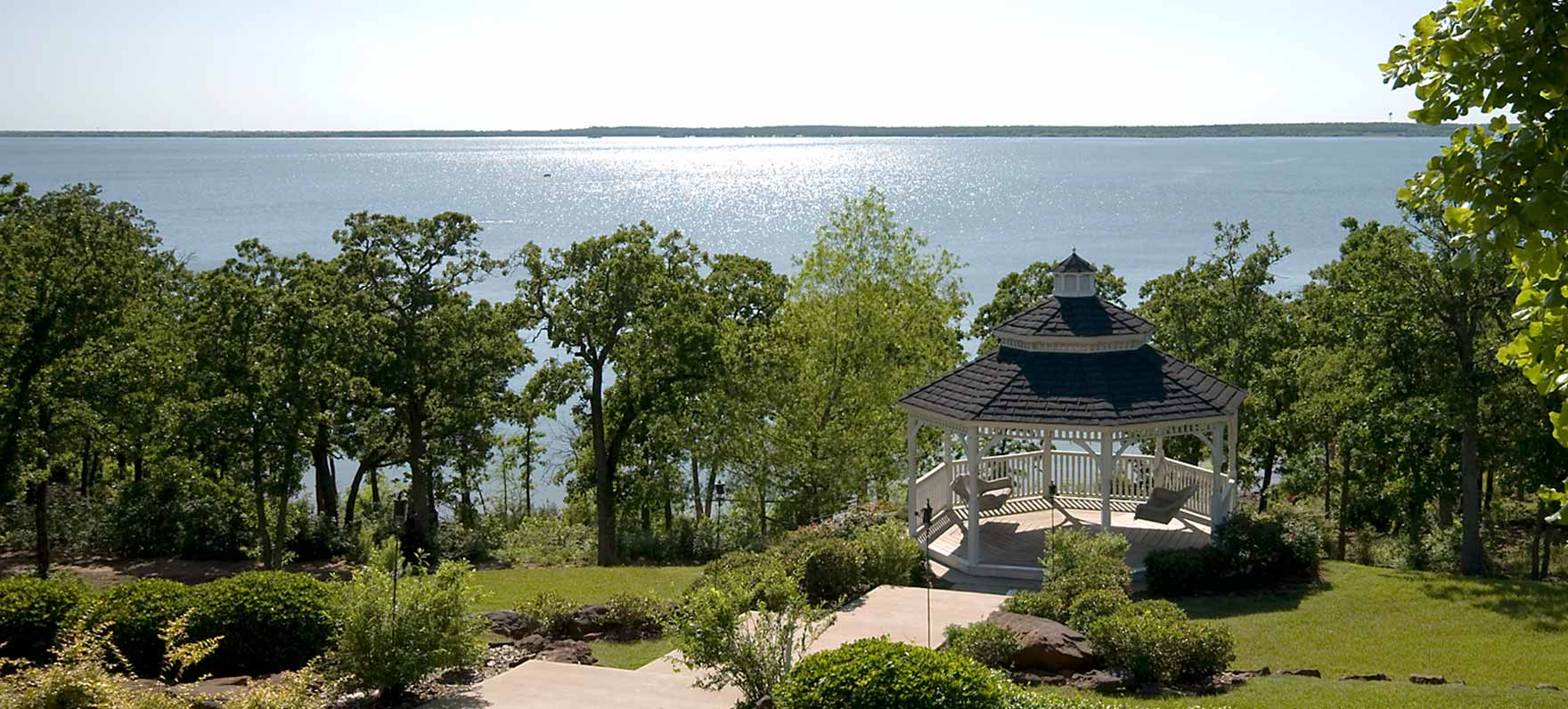
Because of this, it is a rich and diverse area. More than 300 species of plants grow here. Many animals find food and shelter in the oak woodlands and prairie grasslands of the park.
Geologically, this region is part of the Woodbine formation. This Upper Cretaceous deposit formed about 65 million years ago of mostly sandstone, with some local layers of shale and clay.
—
There are many other options beyond the ones listed above to see fall foliage, including Garner State Park, Tyler State Park, Enchanted Rock State Natural Area, Palo Duro Canyon State Park, Caddo Lake State Park, and more.
Please visit the official website of Texas Parks and Wildlife for more information on fall foliage.

